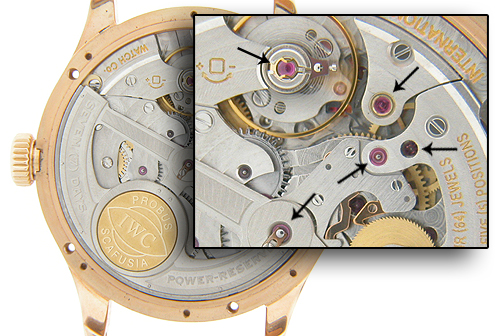Watch movement jewels
Sometimes you see that a mechanical watch has 17 Jewels, or 13 Jewels, but what does that mean? They are called Jewel Bearings and are placed at the center of a rotating gear wheel. The jewels are synthetic Rubies and their purpose is to minimize friction between hardened steel parts, increase accuracy, lower the weight of the movement and help lubricate the movement with a very thin layer of special oil.
Theoretically, more jewels means better precision, but sometimes watch makers add non-functional or unnecessary jewels to give the impression of accuracy. Usually, a fully jeweled timpepiece has around 17 jewels.
The Jewel Bearings were invented in 1704 and, at the beginning, natural stones were used, such as sapphire, ruby and gamet. Almost two centuries later a process to make synthetic rubies was invented and since then they are used, mainly because of its lower costs.

Jewel Bearings in a automatic watch



 Instagram
Instagram Twitter
Twitter Facebook
Facebook

Leave a Reply